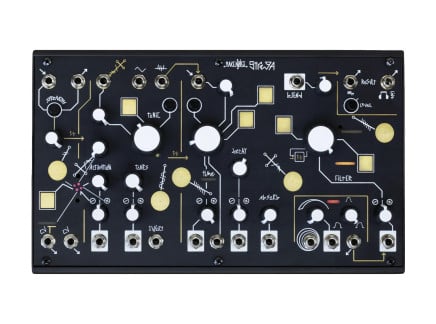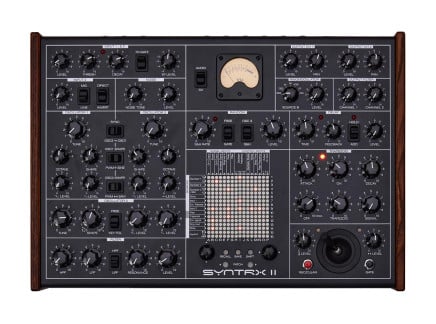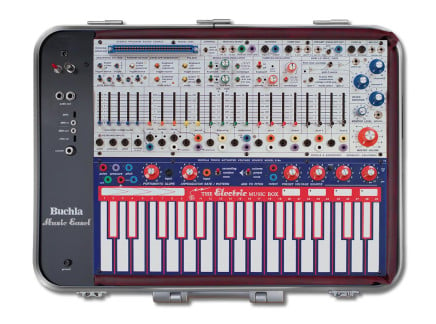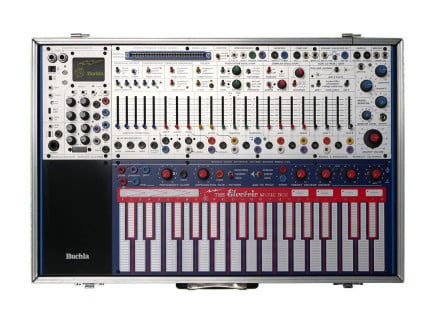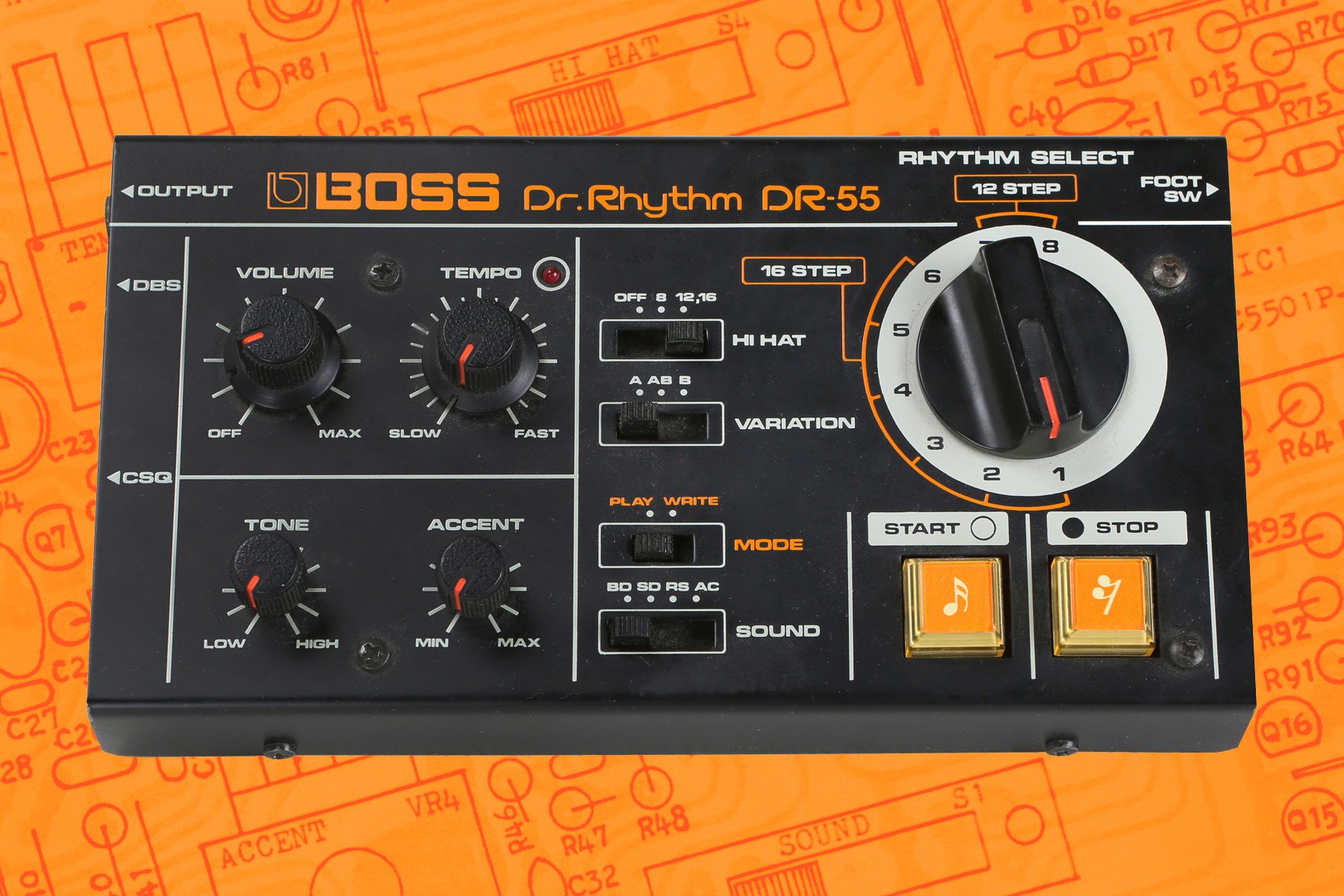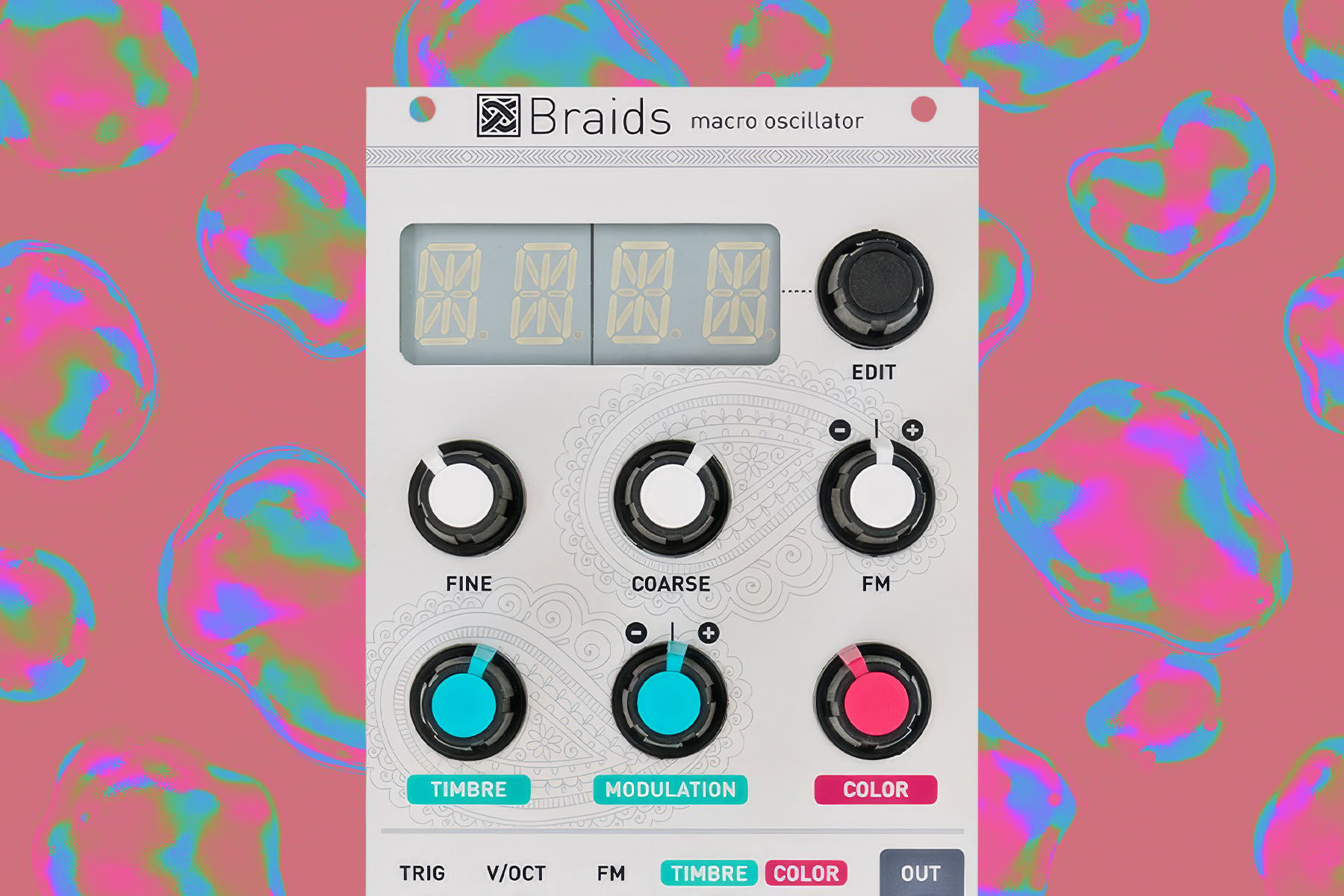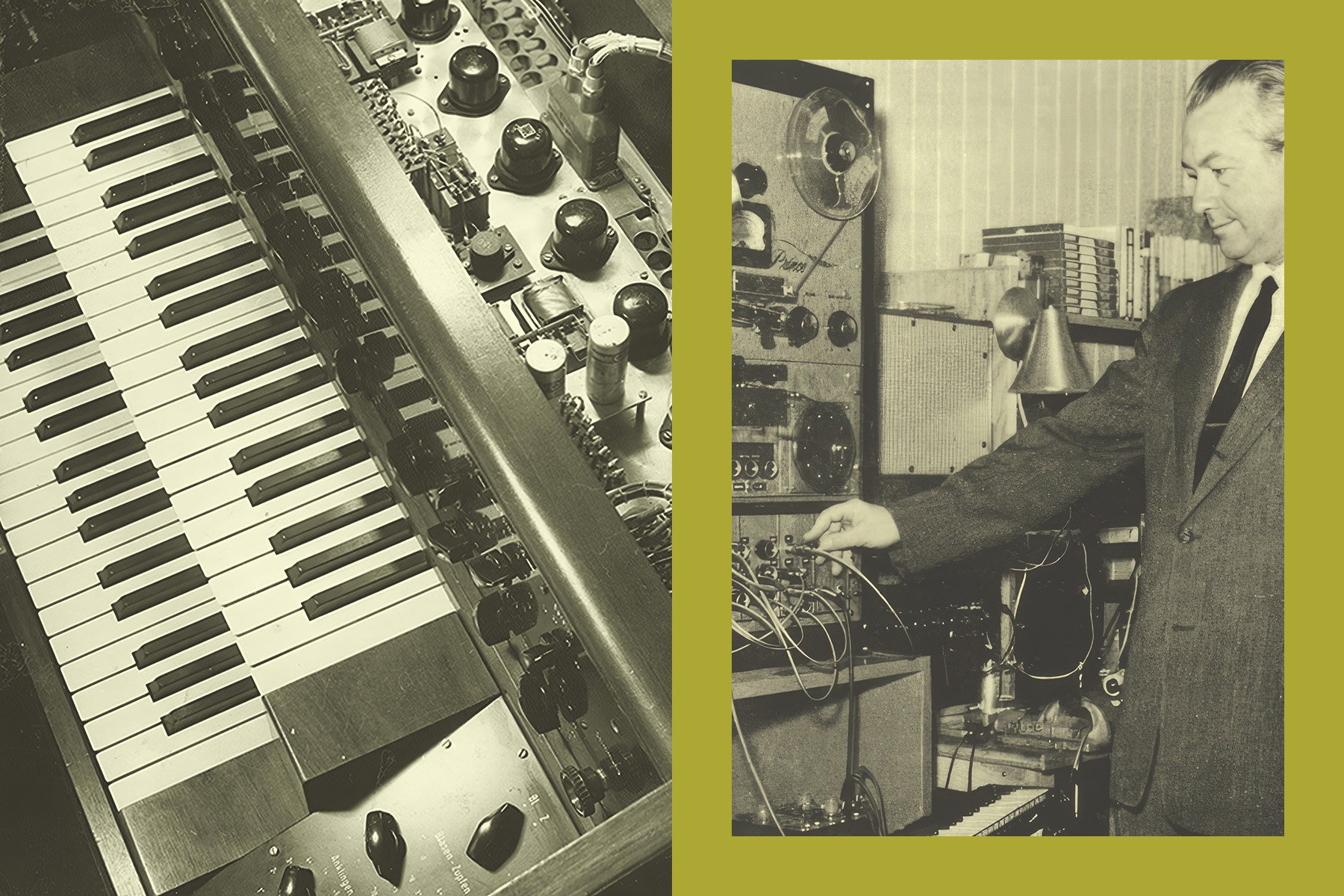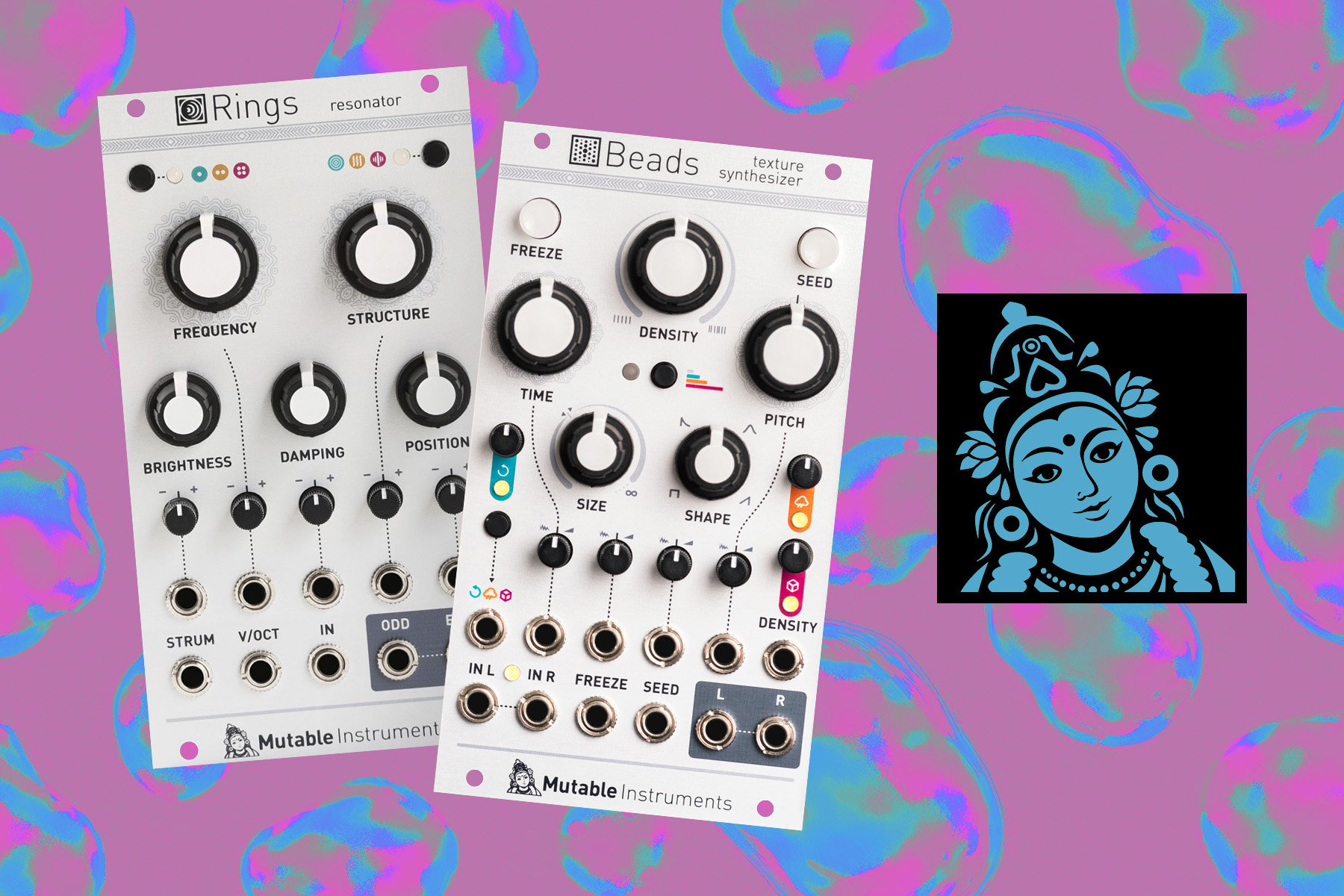It’s a fantastic time to be a synthesizer enthusiast, with a surplus of technological capability and an unprecedented level of public interest in new hardware. Like the depths of a healthy habitat, these favorable conditions have cultivated an explosion of diverse and curious lifeforms, appearing in compounding levels of strangeness, each bending our understanding and pushing our expectations a little further. What this means for you is wholly new avenues of creation, pure of any preconceived traps of routine. Taming these strange beasts is like returning to the primordial soup of your creative efforts—a way back to the potential of a genuinely blank slate.
Before venturing further, leave all assumptions here at the top of the scroll, as beyond this point, there are no guarantees. You may get 42 oscillators, or just one, or none at all. You might have to trade the familiar keybed for strange bits of metal or even chunks of wood. Some of the strangeness that follows, you can’t play at all, at least not in the way you’re thinking. Many forego your assumptions of the traditional signal path while asserting new procedures of tonal shaping. One offers nothing but a matrix of possibility; others give you no routing influence whatsoever, while demanding your attention elsewhere. Its communication by physical design: “look here,” … “don’t worry about that,”… “try this.”
Every one of these machines is its own glorious rabbit hole of intriguing research, and as such, we can only briefly touch on the capabilities of each. If you’re looking for a new musical experience, explore the vignettes below, but remember these are just starting points. Once you find one that feels right, keep digging into its conception; many hold insightful stories and lay the groundwork for inspiring experiments, even with your current gear.
Make Noise Strega
Built in collaboration with Alessandro Cortini, the Make Noise Strega excels at gritty dark sonic landscapes. Submerged drones, ominous textures, and thick notes saturated with glitchy interference are a few knob turns away. But don’t dare assume it’s limited to darker-themed music. In fact, major melodies in tandem with Strega’s gritty character produce a particularly beautiful contrast.
Strega’s strangeness begins with its VCA and rich oscillator. A pair of “activation” knobs adjust the VCA level and “interference,” the latter evoking an uncanny random stutter in the Strega’s voice, much like a sample and hold circuit. A shaping “tones” knob blends the oscillator shape from a pure-sounding triangle, through a gritty sawtooth, and ends in a heavy gnashing folded timbre. This all feeds into the Strega’s characterful delay, which has an enormous impact; however, a filter and blend knob offer some taming.
Though the Strega strongly imposes its bizarre signal path, the player isn’t locked into it; Strega’s semi-modular patch points invite experimentation and change-ups. Additionally, a looping envelope, external input preamp, and a few more waveshape outputs from the oscillator add more possibilities. The Strega takes immediate panel improv a step further with several touch plate patch points, where fingers instead of cables are used to make CV connections. In fact, several connections are only accessible via touch, a strong suggestion at how this alchemical mystery box should be approached. If you’re craving otherworldly expressions from the sonic beyond, the Strega will probably get you there faster and more naturally than anything else.
Bastl Softpop2
The Bastl Softpop2 is an experimental synth/groovebox teeming with possibility. The result of a collaboration with master circuit bender, Pete Edwards of Casper Electronics, and no doubt heavily inspired by the beloved avant garde hardware of Rob Hordjik, the Softpop2 defaults to realms that more commonplace instruments haven’t even heard off.
The Softpop2 offers a very playable panel, with six large and inviting sliders that are best thought of in pairs. The first pair focuses on the device’s thick triangle/pulse oscillator, with the first fader controlling the tuning of which can be coarse or quantized to one of 8 selectable and customizable scales; the second fader controls the oscillator pitch mod. It’s here where things take a turn into the unconventional in ways that not only foster unusual results, but that also make Softpop2 a very interconnected synth.
The above-mentioned oscillator pitch mod injects bits of randomness into the oscillator pitch, randomness that comes from the device's sample and hold circuit, which is triggered by the looping envelope. While that’s a complex and risky patch for your average semi-modular, that’s the Softpop2’s default state, as those are all normalled connections.
The groove box bit of Softpop2 comes in the form of the oscillator pitch quantization and an 8 step sequencer with more than a few tricks of its own, including motion recording, per-step slides, pattern chaining, and more. Last but not least are the Softpop2’s 37 modular patch points for interfacing with other semi-modulars, eurorack, and other CV friends.
Many more goodies await every Bastl Softpop2 owner, such as an original take on a distortion/saturation circuit, an external audio input complete with an envelope follower, and a sinister orb that serves as the player’s primary visual feedback. There’s simply too much to cover here.
Elta Solar-42F
Elta’s Solar-42F is a gorgeous-sounding instrument. It’s commonly referenced as a drone synthesizer, which is certainly true, but perhaps only half the story as the Solar-42 goes much further. It’s more of a portal to lush landscapes, a kind of fully-featured ambient symphony in a sturdy metallic form. Put more plainly, its primary sound generation sources are separated into three very different forms and designed to suit equally varying roles.
The ambient conductor has eight voices at her disposal, four of which are drone voices with the capability to produce five separate tones (each with a dedicated on/off button), meaning each drone voice can be set to a different chord. Two melodic voices can be played using the Solar-42’s touch capacitive keyboard or sequenced with CV. Finally, the sound sources conclude with two FM-focused voices, which are great for sound effects.
Aside form its unique collection of components, it’s really the workflow of Solar-42 which sets it apart. A typical session may start with tuning the four drone voices to the desired chords; six mechanical keyboard-style buttons engage and disengage the drone voices. The player may plop one on for some sonic bedrock and begin experimenting with the melodic voices, perhaps selecting different complementary waveshapes for each. Around this time, with the scene coming together, making themselves known are opportunities for modulation using the device’s many CV patch points and one or both of the onboard LFOs. Further experimentation with the FM voices or noise comes in for more complexity, nuance, and personality for the composition. Once the stage is prepared, the Solar-42’s functionality as a one-of-a-kind performance instrument is second to none.
Ciat-Lonbarde Sidrax
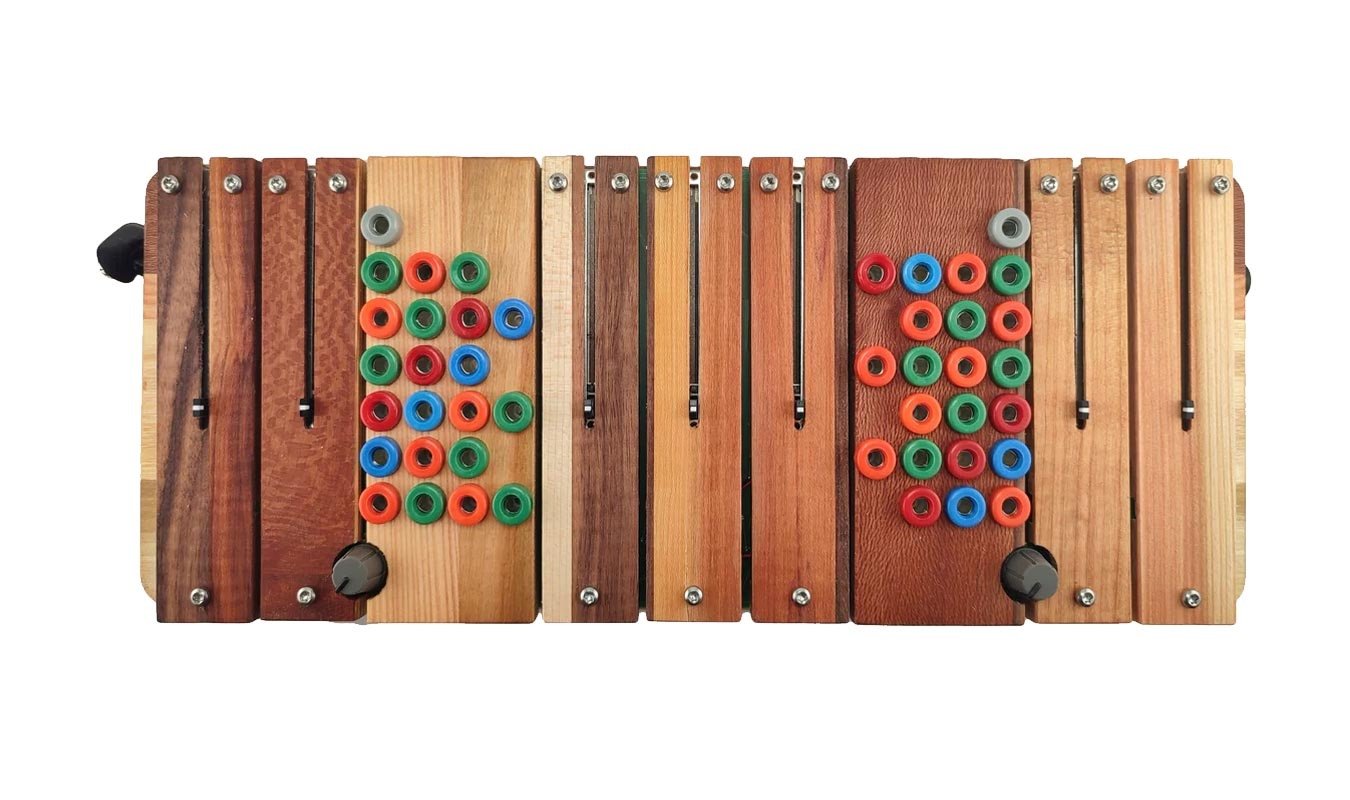
The Sidrax embraces purity and chaos within one special wooden box. In its initial state, pressing down on one or more of the seven wood bars evokes an ethereal and almost sine-like triangle wave. Piezo sensors translate finger pressure into amplitude modulation. Initial press and hold stages of each note are played out on one end of the sidrax’s stereo output, with the release stage sounding out the other side. It’s easy to imagine losing several tranquil hours exploring these gentle tones pop in and out at opposite ends of the stereo field, but of course, more asserting timbres lay just beneath the grain.
Each bar has its own tuning slider and dedicated banana cable patch points, which host FM, pressure, and “glitch” modulation. Rich saw waves are easily obtained by patching a bar back into itself. A chaos knob on the side of the device causes cascading descent into more saturated broken sounds as each oscillator modulates the one to the left of it. There are also global jacks for pitch and a modulation input for the chaos parameter itself.
Through use of Sidrax’s patch points, global chaos parameter, per-bar tuning sliders, and seven voices, the player can assemble a range of sonic pallets, all unique and capable of evoking performances that are exclusive to this interesting device. Crunchy crashes, sharp rings and sweeps, and fluttering clatters are all within reach to pair with variations of the device’s more gentle sounds. The contrast of which seems to evoke unique compositions.
SOMA Laboratory Terra
Terra’s strangely beautiful design makes it immediately clear that the operator is in for something new. In place of keys and buttons, spherical brass touch sensors emerge from its beautiful wooden panel. Twelve individually tunable note sensors are complemented by four similar timbral modifying sensors. The sensors will respond to velocity and also to how much skin is in contact with the sensor, which can feel like pressure sensitivity, often with modulation of attack speed and amplitude. This makes for an extremely organic type of envelope control for both notes and timbre modulations. Flexible pitch bending is available via four smaller sensors. The final ingredient to Terra’s playability is a motion sensor gyroscope that responds to tilting the instrument.
Themes of unorthodox control continue with the visual feedback and parameter controls. A triangle of touch-responding LEDs serves as Terra’s menu, with different light combinations revealing parameters and menu navigation. Finally, the most “normal” parts of Terra’s are its seven knobs at the top, used for controlling a few parameters, envelope releases, and effects.
Beneath Terra’s alien panel sits a digital heart and mind capable of realizing this novel instrument’s full potential. With over 32 synthesis algorithms to explore, Terra encompasses a huge timbral range, though that isn’t to say there isn’t a kind of unifying character between its sounds. There’s definitely a tendency for organic sounds and modulations, and it’s hard to shake a certain preference for Sci-fi and otherworldly-esque timbres. What’s certain is that the thoughtfully curated algorithms combined with Terra’s unique control methods produce gorgeous results.
Analogue Solutions Ample
The Ample channels the energy of some of the earliest synthesizers concocted in the primordial audio labs of entities like EMS, ARP, and even the mysterious inventions of Raymond Scott. A stylish white panel holds the Ample’s purely analog collection of modules, which come together for an earnestly retro experience that still fits right in with any modern setup.
Among the most interesting modules are an EMS-style pin mod-matrix with color-coded pins for different levels of resistance, a “Patternator” analog sequencer, and an interval generator connected to capacitive touch plates for transposing sequences on the fly. One of the most consequential impacts of the Ample is the ability to manipulate sequences using rotary knobs, as any modular enthusiast will tell you, it’s a different experience that produces different results, as evidenced by the many Ample demos available on the web.
Although Ample’s controls and tactile differences are certainly unique, the star of the show is its super-rich character and juicy sound. Big fat oscillators, a squelchy 24Bd low-pass filter, its analog BBD delay, and basically every other part of the Ample’s analog modules come together to produce super organic timbres; simply put, this thing sounds warm and alive.
Landscape Stereo Field
The Landscape Stereo Field is a fully analog sound generator, sound processor, and CV controller. Its two circular capacitive touch plates control two interacting circuits with the outputs panned left and right. Running your fingers over the overlapping touch plates produces wholly unpredictable and wildly varying results. Huge sonic potential inlies seemingly small hand movements. For one of a kind noise generation, this is the holy grail. Distortion, filtering, feedback, rhythmic modulation, and much much more come from working the mysterious gold touchplates.
As an instrument, the Stereo Field is atonal, lending itself more to experimental sounds than traditional composing or playing. However, that doesn't mean this device doesn’t have a place in musical compositions; its two audio inputs allow it to act as sound processor, bringing its bizarre influence to any external source you want. Finally, using as a CV source has equally exciting possibilities, allowing for truly one-of-kind live modulations or even a wild type of tonal influence on your instruments.
Erica Synths Syntrx II
The Syntrx II is one of the most flexible instruments on this list. It’s a modular synthesizer with very few normalled connections, giving full control over the signal path. As the spiritual successor to the iconic Synthi of the 1970s, Syntryx II takes heavy inspiration from the Synthi but then pulls those ideas into the 21st century with some change-ups and additional features.
The player constructs a signal path through Syntrx’s many modules via an ominous red LED patch matrix. Much like the original Synthi, the experience amounts to modular synthesis minus the cables. Consequently, this opens up a truly massive range of possible sonic experiments within Syntrx’s practically infinite number of routing options.
A full rundown of the Syntrx II’s modules and features isn’t possible here, but here are some highlights:
This mono synth offers three characterful VCOs, one of which dips into sub audio-range for use as an LFO. The multi-mode filter is gritty and capable, with low-pass, high-pass, and band-pass options; it tends to saturate easily, which is nice when you want it and easily avoided when you don’t by backing off the input a bit. The main EG comes from a trapezoid module, which produces an attack-hold-decay looping envelope, opening up many avenues for interesting movement when the trapezoid decay is modulated with an LFO, the noise circuit, or both!
The Syntrx II goes far beyond the subtractive basics. You’ve got several unique elements for one-of-a-kind patching opportunities. One of the two external inputs comes equipped with an ever-useful envelope follower. A joystick X-Y controller not only presents an organic method for nuanced control but also records up to 8 seconds of movement AND packs two attenuators for dialing the feel until it’s just right. A ring mod, random circuit, nice digital delay and reverb, among other extras join in to increase the experimental range.
Again, the simplest way to explain the Syntrx II is modular without the cables, but the character of the modules and with the refinements that show up in this glorious synth’s second iteration definitely go further than that general MO. The Syntrx II is something special.
Tasty Chips GR-1
If you’ve ever wanted to pull your granular synthesis VST out of the screen and plop it down on your desk, look no further than the Tasty Chips GR-1. This texture and cinematic timbre dream machine delivers the functionality of a powerful granular synthesizer in a tactile and gratifying piece of tabletop hardware.
Granular synthesis typically works by playing snippets or “grains” of one or more bits of sampled audio. Not only does the use of external audio open up worlds of possible timbres, but by controlling parameters like grain length, density, starting position, and much more, you can achieve sounds you can’t produce via any other method. And the GR-1 steps it up a notch with an incredible amount of control over your granular synth patches along with lots of unique extras.
The GR-1’s sliders and knobs command a glorious 7” touch display. All key granular parameters get dedicated controls, but perhaps the most satisfying is the enormous sample scan slider that scans through your chosen audio sample to find the ideal starting point for your sound. You can also set the starting position to move through the sample as you play in a variety of patterns. Not only can you control the size, starting point, and density of your grains, but you also get to determine their shape with three dedicated grain envelope controls, which are completely separate from the device’s standard ADSR amp envelope.
The GR-1 is four part multi-timbral and packs 11 voices with up to a 128 grains per voice. You get two external CV inputs, a fully featured mod matrix, full midi implementation, and that’s far from all the GR-1 has to offer. This is easily the most elegant and tasteful hardware solution to granular synthesis we’ve seen yet.
Buchla USA Music Easel
The Buchla USA Music Easel is one of the finest alternative synthesizers ever made. It’s original debut dates back to the 1970s, but we’re lucky enough to have an expanded reissue, adapted with many modern conveniences. The mind behind the Easel, Donald Buchla, was after much more than a new synthesizer or even a new type of synthesizer. Buchla’s goal was to branch off into an entirely new way of creating music, and the Music Easel is dense with the fruits of that labor.
The Easel is a unique experience from start to finish, starting with its oscillators. The Buchla has a complex oscillator and a modulation oscillator. The complex oscillator has the renowned Buchla timbre control, which produces the famous effect of wavefolding. That feeds into another Buchla special: dual low pass gates. They simultaneously modulate frequency and amplitude in a way that loosely approximates the behavior of real-world sounds. These two elements in particular, come together in a brilliant way that is a big part of the Easel sound. However, this barely scratches the surface of the Easel's feature set.
Beyond the above, the Easel’s touch capacitive keyboard, banana jack semi-modular functionality, one-of-a-kind sequencing capabilities afforded by the 5-step voltage sequencer, looping envelope, and tons more squeeze an enormous amount of capability into this exquisite briefcase-encapsulated wonder.
Made with Care
None of these gloriously unique machines would exist without the persistence and strong will of their creators, as they were all certainly risky endeavors as novel instruments. But from these questionable origins comes the necessary component of passion.
Each one of these beautiful oddballs was certainly made with love, and for me, that absolutely comes through in the sound. The designs are purposeful and often so different that the playing experience may feel like a conversation with the creator. Hopefully one of these brief expositions piqued your interest for further investigation. When it comes to musical inspiration, a little strangeness goes a long way.


